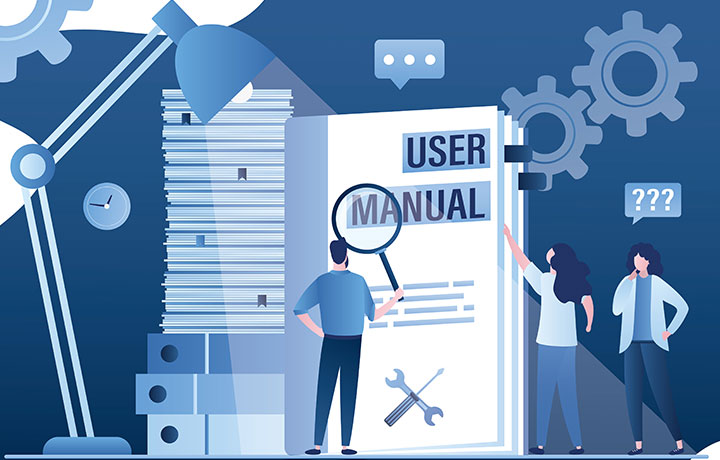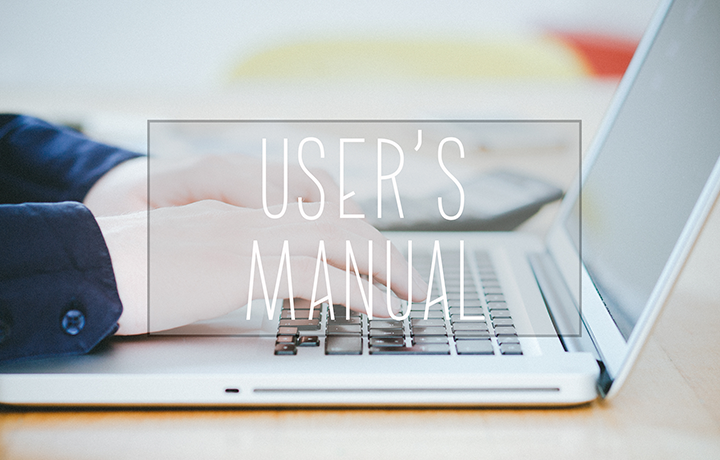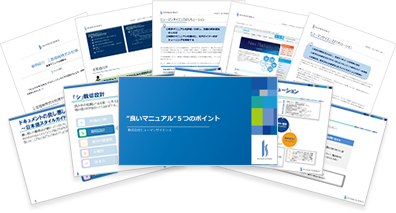
In the past, technology was typically handled in a closed manner, akin to a family secret. In recent years, there has been a shift towards handling technology openly. Especially in the midst of the Fourth Industrial Revolution, the ability to handle new technologies and products openly and to standardize them has become a key factor in the trends of companies. If standardization in the market can be achieved, various benefits such as licensing revenue, efficient development, and increased productivity can be realized. This increase in productivity due to standardization applies not only to products and services but also to business operations.
When it comes to standardizing operations, have you ever thought about the following?
"I've heard that standardizing operations is important, but why is it important...?"
"I want to know what measures can be taken to standardize operations."
In this article, we will introduce the key points for creating manuals that achieve business standardization.
We will also explain what business standardization is and its objectives.
Conducting business at a certain level is essential for teamwork. This time, we will focus on manual creation and explain the key points of standardizing operations.
- Table of Contents
1. What is Business Standardization: Its Purpose and Reasons

Before introducing the key points for creating manuals that achieve business standardization, let me first explain what business standardization is.
Business standardization involves primarily two steps.
① Organizing tasks with different procedures
② Establishing appropriate business procedures for the organization and ensuring their thorough implementation
Let's consider a case where we aim to standardize the way curry is made in restaurants.
First, let's organize the tasks that have different procedures.
The way to make curry may vary depending on the person or even the day. We will confirm the variations in the order of tasks, such as whether to cut the carrots first or peel the potatoes.
Next, we will establish appropriate business procedures as an organization and implement them thoroughly.
For areas where there is variation in procedures, the organization should establish appropriate business procedures. For example, in making curry, the first step is to "always wash your hands." And we must not forget to thoroughly implement the established procedures.
Here, we will explain the purpose of standardizing operations.
The reason for standardizing operations is simply to improve operational efficiency and enhance quality.
By standardizing operations, it becomes possible for anyone to perform tasks efficiently while maintaining a certain level of quality.
Again, let's take the example of how to make curry.
First, let's talk about efficiency. While Person A takes 20 minutes to make curry, Person B does it in 18 minutes. If we look at just one instance, that's only a 2-minute difference. However, what happens when we consider days, weeks, or even years? A significant gap can emerge. As a company, it becomes problematic when there are such differences in efficiency, so we aim to standardize our operations.
Next, let's talk about quality improvement. A's curry has a quality that attracts long lines. In contrast, B's curry is of average quality. While the curry is indeed made, the difference in product quality depending on who makes it will not lead to stable sales. To ensure consistent performance, we will standardize our operations.
2. What are the key points for creating manuals that achieve standardization in operations?

Building on the content of the previous chapter, this chapter introduces key points for creating manuals that achieve business standardization.
Point 1: Set the target for the manual and ensure appropriate content
The first point is to set the target for the manual and include appropriate content.
Let's decide who the manual is intended for. Is it for new employees, for customers, or is it for company-wide use, etc.?
Once the target audience for the manual is determined, the level of detail to be included in the manual is inevitably decided. For example, if the target is new employees, it is necessary to provide detailed information since they lack knowledge and experience in the industry.
Point 2: Clearly state the key points
The second point is to state the key points concisely.
Don't you often come across manuals that are lengthy yet difficult to grasp the main points? Due to redundancy and a lack of clarity on the key points, the intended message is not correctly understood. It is important to clarify the "purpose" and "subject," eliminate unnecessary explanations, and concisely describe the key points.
As the creators of the manual, there are many things we want to convey. However, let's scrutinize the information to be communicated and focus on the key points.
Point 3: Set appropriate content for headings and titles
The third point is to ensure that headings and titles are appropriate for the content.
The reason Google Search has become so widespread is that it allows you to find the information you want instantly.
While it may not be as comprehensive as a Google search, a manual that allows users to quickly access the information they need is highly beneficial for them.
For example, when a user with some experience uses the manual, it is usually when they are in trouble or have forgotten how to respond. It is important to make the table of contents and headings clear so that they can quickly reach the necessary information.
Point 4: Use diagrams, tables, and illustrations for easy understanding
The fourth point is to use diagrams, tables, and illustrations. By incorporating diagrams and tables as needed, the manual becomes easier to read.
Humans gather 90% of information visually. It is undoubtedly burdensome to acquire information from manuals that consist solely of text. By using diagrams, tables, and illustrations, users' understanding is enhanced.
Additionally, manuals should be updated regularly. Instead of aiming for a one-time completion, let's refine them while responding to feedback from the field and changes in operations.
Related Blog Posts
Comprehensive Guide: How to Create a Manual Without Fail3. Summary
How was it?
This time, we introduced the key points for creating manuals that achieve standardization of operations. Various factors, such as the personality and career of the person performing the tasks, create situations with different operational procedures.
If the business procedures differ, standardization through manuals is recommended. Even when weighing cost and effectiveness, standardization through manuals can be considered a balanced approach.
I am well aware that manuals are a cost-effective approach, but I feel that many people are unable to dedicate time to them. Especially in busy environments, creating manuals can be one of the tasks that is difficult to start.
If you cannot allocate people for manual creation or want to ask a professional expert to create it, outsourcing is one option.
Human Science has over 20 years of history and is a professional group with a track record of creating manuals for 215 companies and 2854 projects.
If you have any concerns while advancing your business manuals, please feel free to consult with us.
Feature 1: Research and analysis by experienced consultants - Output
The creation of business manuals is handled by our experienced consultants at Human Science. Our skilled consultants will propose clearer business manuals based on their extensive experience and the materials provided. Additionally, it is possible to create manuals even from the initial stages without any materials. The assigned consultant will conduct interviews and carry out the manual creation.
Feature 2: Manual creation using the latest technology
When it comes to manuals, it is common to create them using Word or PowerPoint. At Human Science, in addition to these two, we also offer manual creation using the latest technologies such as GitHub, CMS, wikiworks, and Confluence. By being well-versed in the latest technologies, we reduce communication costs and shorten the time to complete manuals.
Feature 3: Extensive manual production experience, primarily with large and global companies
Human Science has a wealth of experience in creating operational manuals, primarily in the manufacturing and IT industries, since 1985. We have a track record of 215 companies and 2,854 projects. We have worked with renowned clients such as Tokyu Livable, Inc., Cygames, Inc., and Konami Digital Entertainment, Inc.








































































 Manual creation
Manual creation Director, Writer
Director, Writer In-house Support
In-house Support Video
Video Manual
Manual Manual Creation
Manual Creation One-Stop Service for Manual Creation
One-Stop Service for Manual Creation Manuals and Documents
Manuals and Documents



